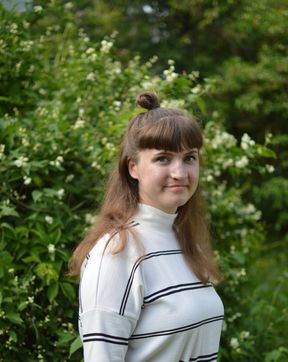Water and Environmental Engineering, Master of Science (Technology)
To ensure sustainable and functioning societies, the world needs engineers specialised in solving local and global water-related challenges.

I did a Master’s degree in biology in the University of Helsinki, and have been working as a marine biologist and ecotoxicologist ever since at SYKE (Finnish Environment Institute), doing research on the biological effects of the pollution in the Baltic Sea. In my work I have seen how widespread and complex the pollution situation in the Baltic Sea is, but I felt that instead of just studying the consequences of pollution, Water and Environmental Engineering (WAT) studies could give me tools to help solve the problems. These are technical tools like modeling and water treatment procedures, but also tools for better governance and sustainability.
The best thing about the programme is meeting great, motivated fellow students from different study and work backgrounds. All the teachers, lecturers and professors have been great and very helpful. They are enthusiastic about their own field and are able to spread that enthusiasm to us students.
In WAT especially, group work and interactive lectures play a big part. There might be multiple group work assignments you have to juggle at the same time, helping to improve your time management skills!
When it comes to my favorite courses so far, I really enjoyed the course “Water and People in a Changing World”, where we used R statistics to visualize e.g. global water, food and climate change issues. After that course, data visualization has become my top interest.
What surprised me was that there is an entire WAT course devoted to governance and management of water issues in different scales, “Water and Governance”. This doesn’t sound very “engineer-y” but I found the course highly interesting and important in finding your place in society and ways to improve the world as a water and environment professional.
My usual day consists of lectures or small group work in the Water building in the mornings, followed by lunch, and then independent work such as modelling in the library or at home.
I’m also participating WAT student organization Akva’s events. Last year they held a Christmas WAT sitsit with plenty of water themed songs and great fun!
After my graduation I would like to continue working with improving the state of the Baltic Sea, combining my studies in biology and WAT programme/Aalto. My dream job would be to help improve water governance and decision-making by visualizing and synthetizing often complex environmental research data.
Currently I’m working at the SYKE, in the Marine Research Centre in the Marine Pollution group. I do research on the biological effects of hazardous substances in the Baltic Sea, and recently I have focused on oil spills and pollution from sea-dumped chemical and conventional munitions. I also gave a lecture about these topics last autumn for the new WAT students in their first-period common course. I have gained understanding of many computational tools at my work and I have learned that there are many possibilities those can offer.
At my work I work in the lab some days, analyzing biological samples for effects of hazardous substances aka. pipetting reagents in tubes. On other days, I go through the results from the lab, write scientific articles and reports and take part in meetings to discuss further research. Best days at work are at the sea taking samples!
My advice for students considering their studies in WAT is that the first period of studies is very immersive and intense. There will be no life outside WAT, but just go with the flow and enjoy the ride!

To ensure sustainable and functioning societies, the world needs engineers specialised in solving local and global water-related challenges.